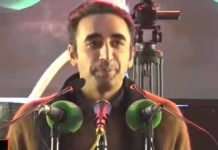PIDE MacroPoilcy Lab suggests reconsidering the current stance of MP and reduce the discount rate between 50 to 100 basis point. While keeping a strict watch on the exchange rate pressure and Money supply situation in the economy.
Islamabad, Dec 11: /DNA/ – Monetary Policy: Background: Since June 26, 2023, Monetary Policy Committee (MPC) of the State Bank of Pakistan (SBP) has chosen to keep the policy rate steady at 22%. In the last meeting of MPC’s decision of keeping policy rate at 22% was influenced by the increase in headline inflation in September 2023, the volatility in global oil prices and the scheduled increase in gas tariffs starting November 2023. The MPC is scheduled to convene on December 12, 2023, to discuss and decide about the policy rate; whether the SBP should continue with the same policy rate or change it based on various economic indicators of Pakistan presented at the meeting.
Sector wise analysis and Progress: The indicators that play a crucial role in guiding the conduct of monetary policy span across different sectors, providing a comprehensive view of the economic landscape. In the real sector, the quarterly indicators serve as crucial benchmarks for assessing the performance of key sectors such as agriculture, industry, and services. For the first quarter of the current fiscal year, Pakistan Bureau of Statistics (PBS) revealed growth rates of 2.48%, 5.06%, and 0.82% for agriculture, industry, and services sectors, respectively. The overall first-quarter growth on a year-on-year basis is reported at 2.13%, signaling a positive trend for the economy.
External Sector Progress: While examining the external sector; MPC focuses on the current account balance, which encompasses both exports and remittances, as well as the stability of foreign exchange (FX) reserves. The MPC meeting held on October 30 highlighted a significant improvement in Pakistan’s current account balance. The current account deficit (CAD) witnessed a 58% year-on-year reduction to $947 million for the period Jul-Sep FY24 after which for the month of September it was almost zero (balanced Current A/c). However, the data from October 2023 reveals a further reduction in the current account deficit to just $74 million, marking a noteworthy 91% decrease compared to the same month in the previous year. Nevertheless, it’s important to note a 61% increase in the deficit compared to the preceding month, attributed to debt servicing payment. Although the reserves have been building but by November 2023, the SBP reserves declined by $217 million, reaching $7.180 billion.
Money Supply Dynamics: Money and credit aspects are vital components, incorporating measurements such as M2 growth, interbank and open market exchange rates, currency in circulation, and the Net Foreign Assets (NFA) and Net Domestic Assets (NDA). Moving on to money and credit situation in the economy, the average money growth in October and November stands at approximately 13.5%, surpassing the previous two-month average. The exchange rate has experienced fluctuations, ranging from 280 to 285 in October and November, in contrast to the range of 290 to 300 observed in August and September for the interbank rates.
Inflation: Additionally, an assessment of the inflation outlook involves monitoring headline inflation, global oil prices, and gas tariffs, while also taking into account inflation expectations and overall confidence in the economy. Addressing the inflation outlook, a positive shift in the consumer confidence index (from 26.2 in September to 32.78 in October) and a decrease in inflation expectations (from 78.08 in September to 73.30 in October) indicate growing optimism among consumers in Pakistan regarding the economic outlook and anticipated lower inflation levels. Such low inflation expectations provide the central bank with some flexibility. If inflation expectations remain well-anchored and below the central bank’s target, it may have room to relax monetary policies to further stimulate economic activity. Additionally, the volatility in global oil prices, ranging from $68 per barrel to $91 per barrel during the current fiscal year, plays a crucial role in influencing domestic prices in oil importing countries. The recent dip in oil prices to around $70 per barrel adds to the complexity of the economic landscape.
Fiscal Consolidation: On the Fiscal front government is pursuing fiscal consolidation; a consolidated primary surplus of 417 billion rupees for the first quarter (July-September, 2023) have been achieved as compared to 135 Billion rupees for the same period last year. Taxes have posted a healthy growth surpassing the revenue target set for the first quarter and a 24.4 percent higher than the comparable period last year first quarter (Rs. 2.22 trillion vrs Rs. 1.78 trillion). However, the higher policy rates have also led to increase in debt servicing cost which stood at Rs 1.38 trillion for the first quarter as compared to 0.95 trillion for the same period last year. With over all expenditures for the first quarter climbing to Rs. 3.65 trillion this year vs. Rs. 2.84 trillion in the last year for the same period. Interest payment cost stood at 80% of the total tax collection at the federal level, which pays off the interest/debt servicing expenditures.
Cost of High Policy Rate: After examining the recent monetary policy statements and considering these indicators, it is likely that the MPC will maintain the policy rate at 22%. However, it’s important to note that an extended period of such a high policy rate comes with significant costs. One of these costs is associated with disinflation, commonly referred to as the Sacrifice ratio. Haque and Jalil (April 2020) have calculated that, on average, this ratio is 0.662 for the Pakistani economy. This implies that, on average, a sacrifice of 0.662 percent of real GDP growth is needed for a permanent reduction of one percent in inflation.
When interest rates stay high for a long time, it causes a financial stress resulting in deferment of many economic investment decisions or even running of the current businesses.
- First, the country ends up owing more money for domestic debt obligations, so the government has to collect extra taxes to service this debt obligation.
- Second, price increase may come from the supply side making the economic situation even tougher. Third, when interest rates are high and prices are rising fast, the real interest rates (the ones that are considered for inflation-based targets) can become very low or even negative. This makes people less interested in saving money, and it also makes it harder for businesses to invest.
- Finally, there’s a bigger risk that the economy might go into a recession, meaning there’s less money circulating, but prices are still high – this tricky situation is called stagflation which Pakistan is currently facing.

















